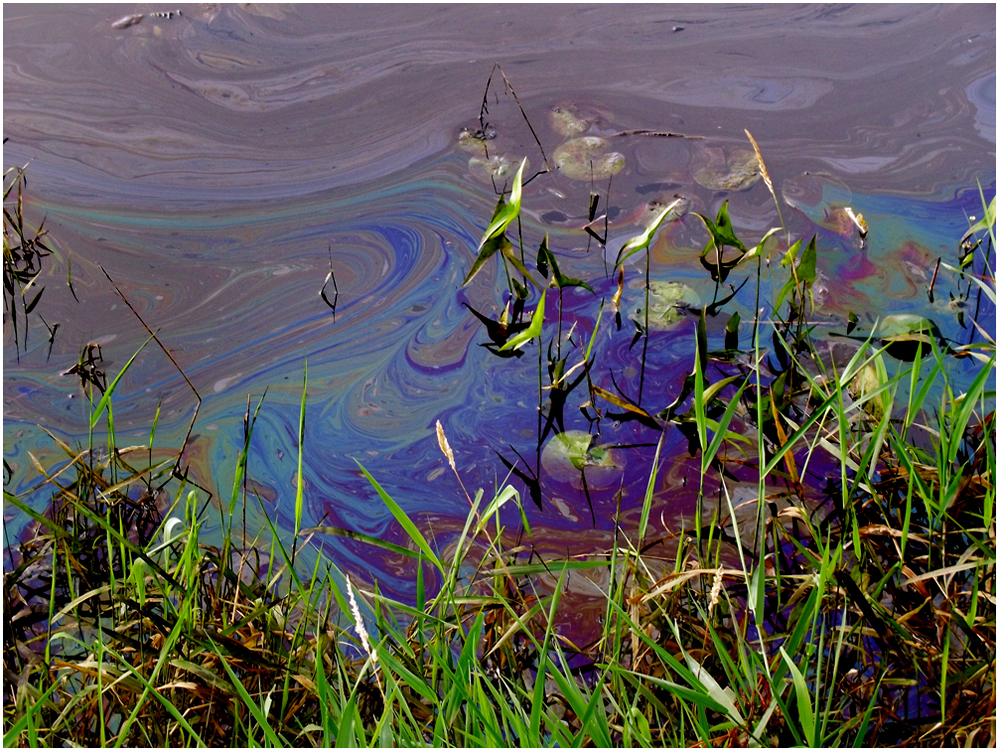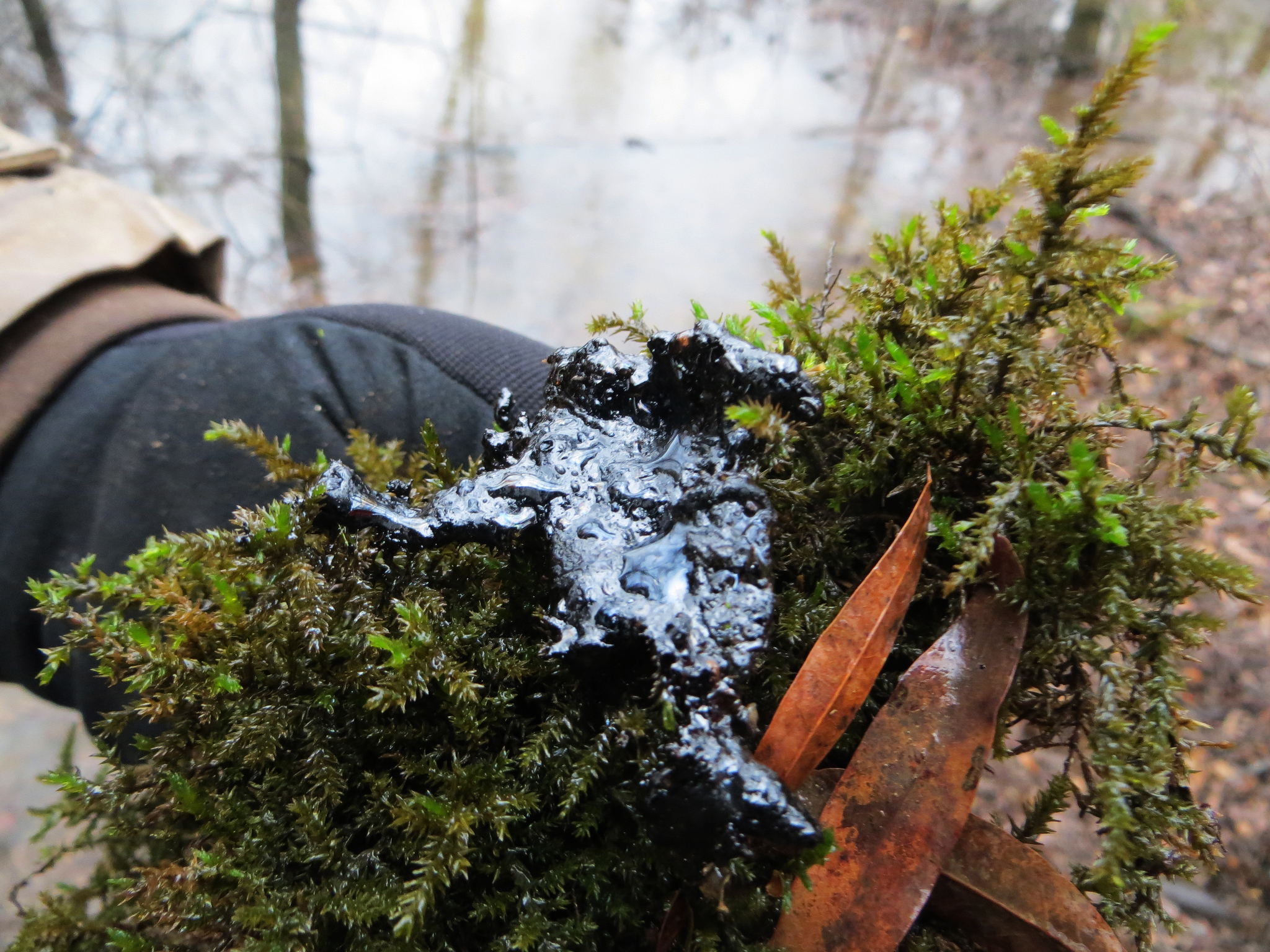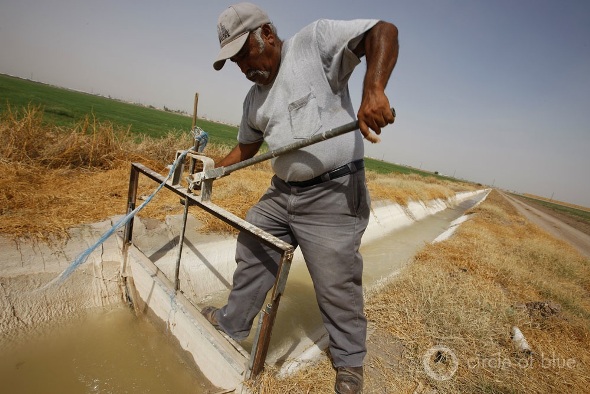U.S. Not Prepared for Tar Sands Oil Spills, National Study Finds
Report urges new regulations, research, and technology to respond to spills of diluted bitumen.
By Codi Kozacek
Circle of Blue
Spills of heavy crude oil from western Canada’s tar sands are more difficult to clean up than other types of conventional oil, particularly if the spill occurs in water, a new study by a high-level committee of experts found. Moreover, current regulations governing emergency response plans for oil spills in the United States are inadequate to address spills of tar sands oil.
The study by the U.S. National Academies of Sciences, Engineering, and Medicine confirmed what scientists, emergency responders, and conservationists knew anecdotally from a major oil spill that contaminated Michigan’s Kalamazoo River in 2010 and another spill in Mayflower, Arkansas in 2013. Tar sands crude, called diluted bitumen, becomes denser and stickier than other types of oil after it spills from a pipeline, sinking to the bottom of rivers, lakes, and estuaries and coating vegetation instead of floating on top of the water.
–Diane McKnight,
Chair
Committee on the Effects of Diluted Bitumen on the Environment
“The long-term risk associated with the weathered bitumen is the potential for that [oil] becoming submerged and sinking into water bodies where it gets into the sediments,” Diane McKnight, chair of the committee that produced the study and a professor of engineering at the University of Colorado Boulder, told Circle of Blue. “And then those sediments can become resuspended and move further downstream and have consequences not only at the ecosystem level but also in terms of water supply.”
“It weathers to a denser material, and it’s stickier, and that’s a problem. It’s a distinct problem that makes it different from other crude.” McKnight added. Weathering is what happens after oil is spilled and exposed to sunlight, water, and other elements. In order to flow through pipelines, tar sands crude oil is mixed with lighter oils, which evaporate during the weathering process. In a matter of days, what is left of the diluted bitumen can sink.
The study’s findings come amid an expansion in unconventional fuels development and transport in North America. Over the past decade, Canada became the world’s fifth largest crude oil producer by developing the Alberta tar sands. U.S. imports of Canadian crude, much of it from tar sands, increased 58 percent over the past decade, according to the U.S. Energy Information Administration.
Though oil prices are at a seven-year low, and market turbulence is expected to persist for several more years, tar sands developers are working to double the current tar sands oil production — around 2.2 million barrels per day — by 2030. Pipelines to transport all of the new oil are expanding too, producing a greater risk of spills.
Whether tar sands producers achieve that level of oil supply is not assured. Public pressure is mounting in Canada and the United States to rein in tar sands development due to considerable environmental damage and heavy carbon emissions. U.S. President Barack Obama last month scrapped the Keystone XL pipeline, an 800,000-barrel-per-day project to move crude oil from Canada’s tar sands to Gulf of Mexico refineries. An international movement to divest from fossil fuels and a legally binding global deal to cut carbon emissions –if it is signed in Paris– could curb demand for tar sands oil.
The National Academies of Sciences, Engineering, and Medicine study adds new data to arguments made by critics of tar sands development.
“The study really confirms a lot of the information that has been out there, there are no real surprises,” Jim Murphy, senior counsel for the National Wildlife Federation, told Circle of Blue. “You don’t want these things to be affirmed because it’s bad news for communities. But the good part about a study like this is hopefully it will prompt some action. Some folks were hiding behind the lack of a study like this, saying we don’t really know. Those excuses have gone away.”
“The chief takeaway is that this is a different oil, it presents different challenges, and responders and regulators simply don’t have the structures in place to deal with the challenges,” he added.
–Jim Murphy,
Senior Counsel
National Wildlife Federation
Nonetheless, energy companies are pursuing pipeline expansions, most notably in the Midwest and Great Lakes regions. Enbridge, Canada’s largest transporter of crude oil, operates a 3,000-kilometer (1,900-mile) pipeline network, known as the Lakehead System, that carries crude oil from Canada to refineries on the Great Lakes. The Lakehead system, in concert with Enbridge’s Canadian main line, is capable of transporting 2.62 million barrels of oil per day. The pipeline responsible for the 2010 oil spill in Kalamazoo was part of the Lakehead system. A link in the Lakehead system ruptured in 2010 and spilled more than 3 million liters (843,000 gallons) of tar sands oil into southern Michigan’s Kalamazoo River. It was the largest inland oil spill in U.S. history and its effects still linger because of oil that sank and is embedded in the river’s sediments.
Enbridge is currently pursuing upgrades to its Alberta Clipper pipeline, which runs through Minnesota and Wisconsin, in order to boost the line’s capacity to 800,000 barrels per day from 450,000 barrels per day. A second project aims to increase the capacity of Line 61, a pipeline that runs from Wisconsin to Illinois, from 560,000 barrels per day to 1.2 million barrels per day. Opposition to the company’s operation of a pipeline that runs beneath the Straits of Mackinac, where Lake Michigan and Lake Huron join, has been especially fierce, though the line does not currently carry tar sands oil.
“I think at the very least we should be saying no to more tar sands through the [Great Lakes] region until we get a firm handle on how to deal with the unique challenges that tar sands spills present,” Murphy said. “We should also be taking a hard look, as the president did with the Keystone XL decision, about the other negative impacts of more tar sands oil, like the consequences in Alberta with the habitat destruction there, and also the higher carbon pollution content of the fuel.”
The National Academies study concluded that the characteristics of diluted bitumen are “highly problematic for spill response because 1) there are few effective techniques for detection, containment, and recovery of oil that is submerged in the water column, and 2) available techniques for responding to oil that has sunken to the bottom have variable effectiveness depending on the spill conditions.”
“Broadly, regulations and agency practices do not take the unique properties of diluted bitumen into account, nor do they encourage effective planning for spills of diluted bitumen,” it continued.
The study’s authors made a series of recommendations to help reduce the damage from future tar sands spills, including:
- Update regulations that would require pipeline operators to identify and provide safety sheets for each crude oil transported by the pipeline, catalogue the areas and water bodies that would be most sensitive to a diluted bitumen spill, describe how they would detect and recover sunken oil, provide samples and information about the type of oil spilled to emergency officials, and publicly report the annual volumes and types of crude oil that pass through each pipeline.
- Require the Pipeline and Hazardous Materials Safety Administration (PHMSA), the federal agency that regulates pipelines in the United States, to review spill response plans in coordination with the U.S. Environmental Protection Agency and U.S. Coast Guard to determine if the plans are capable of responding to diluted bitumen spills.
- Develop methods to detect, contain, and recover oil that sinks to the bottom of water bodies.
- Require government agencies at the federal, state, and local level to use industry-standard names for crude oils when planning spill responses.
- Revise oil classifications used by the U.S. Coast Guard to indicate that diluted bitumen can sink in water.
- Collect data to improve modeling of diluted bitumen oil spills.
- Improve coordination between federal agencies and state and local governments when planning and practicing oil spill response exercises.
- Develop a standard method for determining the adhesion –a measure of how sticky the oil is–of diluted bitumen in the event of a spill.
After the study’s release, PHMSA said it would develop a bulletin advising pipeline operators about the recommendations and urge voluntary improvements to their spill response plans. The agency also plans to hold a workshop next spring to hear public input on how to implement the recommendations, coordinate with other federal organizations to “advance the recommendations”, and work with industry representatives to improve spill response planning.
“We appreciate the work the National Academy of Sciences has done over the last few years in analyzing the risks of transporting diluted bitumen, including its effects on transmission pipelines, the environment and oil spill response activities,” Artealia Gilliard, PHMSA spokesperson and director for governmental, international and public affairs, said in a statement. “All pipelines transporting crude oil or any other hazardous liquid are required to meet strict federal safety regulations that work to prevent pipeline failures and to mitigate the consequences of pipeline failures when they occur.”
A news correspondent for Circle of Blue based out of Hawaii. She writes The Stream, Circle of Blue’s daily digest of international water news trends. Her interests include food security, ecology and the Great Lakes.
Contact Codi Kozacek













Trackbacks & Pingbacks
[…] project is bigger. It will transport tar sands crude, which is particularly hard to clean up when it spills. And construction this summer coincided with the worst drought in Minnesota since […]
Leave a Reply
Want to join the discussion?Feel free to contribute!